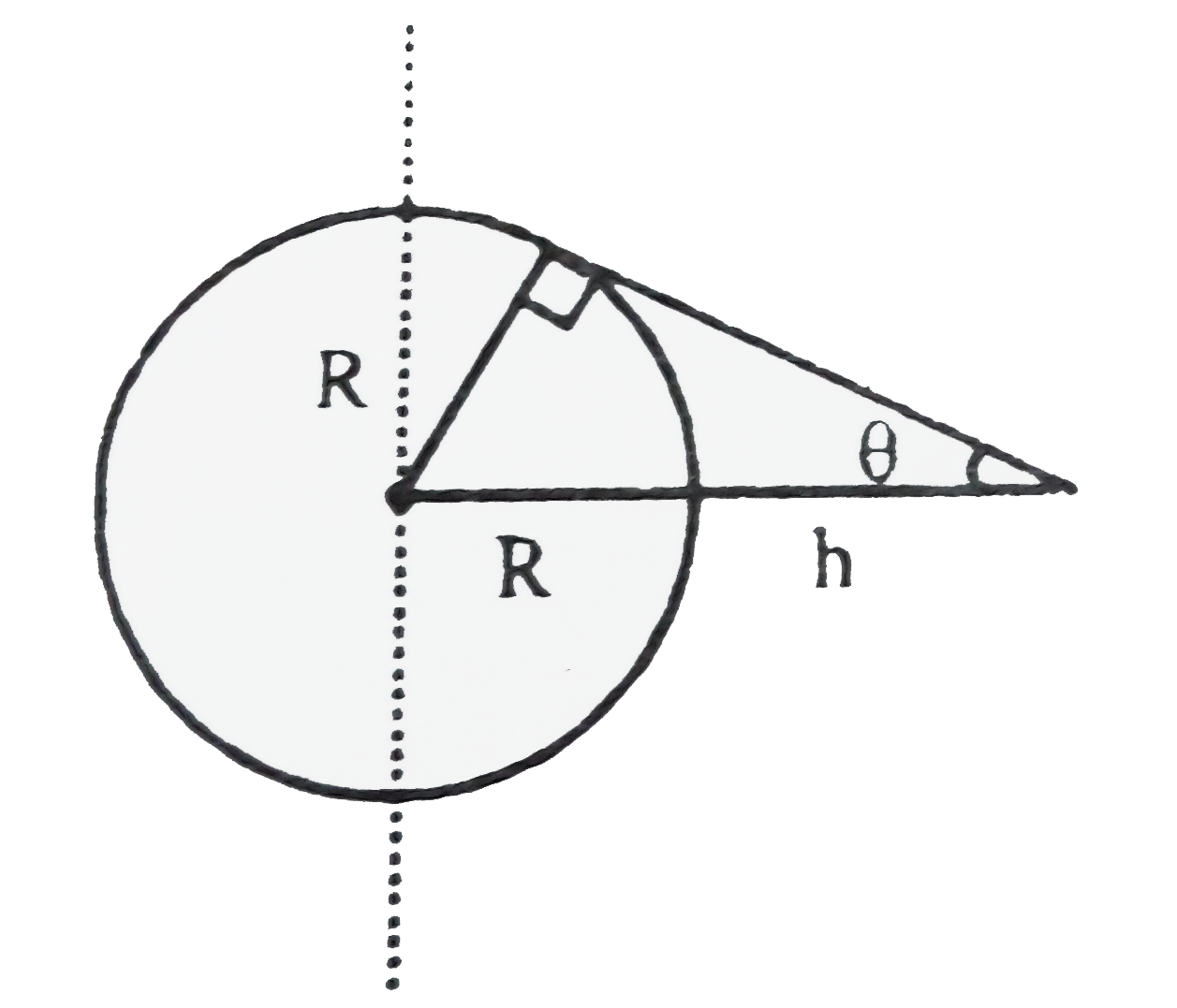An object weighs 10N at north pole of Earth. In a geostationary satellite distance 7R from centre of Earth (of radius R), what will be its (a) true weight (b) apparent weight?
Video Solution
Text Solution
(a) Given, mg=10N. The true
weight of body in a satellite at high h will be given by
WS=mg'=mg(RR+h)2=mg(RR+6R)2
(∵H=7R−R=6R)
or WS=mg49=1049=0.2N
(b) If g' is the acceleration due to gravity of Earth at the position of satellite and a be the acceleration of the satellite, then the apparent weight of body in satellite will be Wapp=m(g'−a). As satellite is a freely falling body therefore a=g'. So
Wapp=m(g'−g')=0
|
Topper's Solved these Questions
- GRAVIATIONBOOK - PRADEEPCHAPTER - GRAVIATIONEXERCISE - SOLVED EXAMPLES TYPE H
1 Videos
- GRAVIATIONBOOK - PRADEEPCHAPTER - GRAVIATIONEXERCISE - SOLVED EXAMPLES TYPE I
1 Videos
- GRAVIATIONBOOK - PRADEEPCHAPTER - GRAVIATIONEXERCISE - SOLVED EXAMPLES TYPE G
1 Videos
- BEHAVIOUR OF PERFECT GAS & KINETIC THEORYBOOK - PRADEEPCHAPTER - BEHAVIOUR OF PERFECT GAS & KINETIC THEORYEXERCISE - Assertion - Reason Type questions
14 Videos
- KINEMATICSBOOK - PRADEEPCHAPTER - KINEMATICSEXERCISE - 1 NCERT Comprehension
4 Videos
Similar Questions
Knowledge Check
The distance of geostationary satellite from the centre of the earth (radius R) is nearest to
A5 RB6 RC7 RD8 RAn object weighs 20 N at the north pole of the earth. In a satellite, revolving at an altitude 4 times the radius of the earth its true weight and apparent weight are
A0, 0.8 NB5 N, 0C1.25 N, 0D0.8 N, 0A geostationary satellite is at a height h above the surface of earth. If earth radius is R-
 AThe minimum colatitude on earth upto which the satellite can be used for communication is sin−1(R/R+h)BThe maximum colatitudes on earth upto which the satellite can be used for communication is sin−1(R/R+h)CThe area on earth escaped from this satellite is given as (2πR2(1+sinθ))DThe area on earth escaped from this satellite is given as (2πR2(1+cosθ)
AThe minimum colatitude on earth upto which the satellite can be used for communication is sin−1(R/R+h)BThe maximum colatitudes on earth upto which the satellite can be used for communication is sin−1(R/R+h)CThe area on earth escaped from this satellite is given as (2πR2(1+sinθ))DThe area on earth escaped from this satellite is given as (2πR2(1+cosθ)
Suppose you are standing on a tall ladder. If your distance from the centre of the earth is 2 R, what will be your weight ?
View SolutionWhat is the true weight of an object in a geostationary satellite that weighed exactly 1.0 N at the north pole?
View SolutionDistance of geostationary satellite from the surface of earth radius (Re=6400km) in terms of Re is
View SolutionThe weight of an object at the centre of the earth of radius R is
View SolutionAn object weights 72 N on earth. Its weight at a height of R /2 from earth is
View Solution
